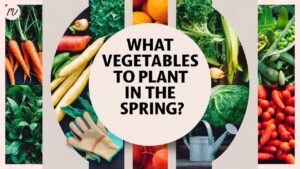If you’re situated in USDA hardiness Zone 8, June is an exciting month to plant a variety of flowers, vegetables, herbs, and landscape plants. This post will guide you through the optimal selections for June planting in Zone 8, detailing temperature tolerances, planting tips, and the delight each plant will bring to your garden.
Vegetables To Plant
Green Beans
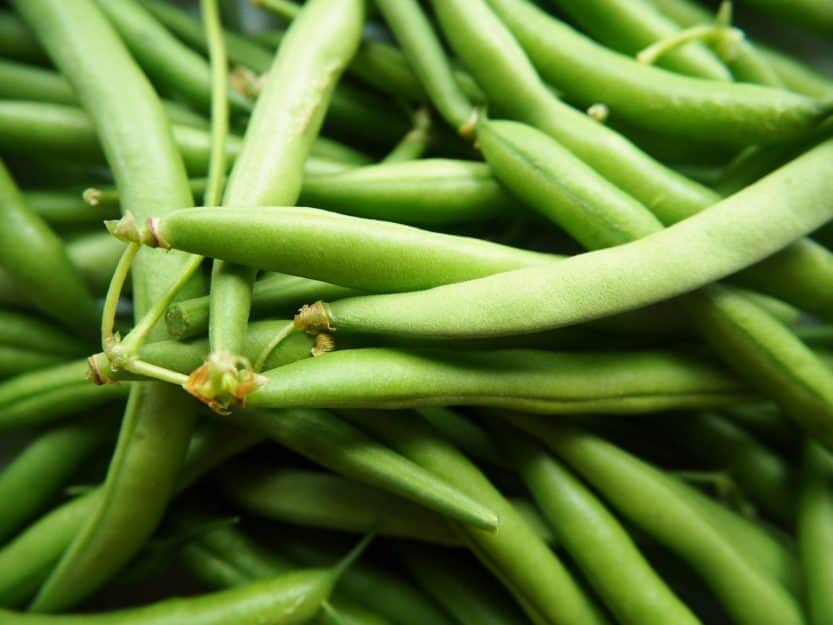
Temperature Tolerance: Green beans thrive in temperatures between 70°F and 90°F. They are vulnerable to frost and prefer warm soil for germination.
Planting Dates: In Zone 8, green beans can be planted as early as mid-April, but June planting ensures a second crop later in the summer.
Green beans can be bush or pole types. Bush beans grow compact and mature quickly, while pole beans require vertical support but produce over a longer period. Regular harvesting encourages continuous production. They are also rich in vitamins A, C, and K, making them not just tasty but nutritious.
Cucumbers
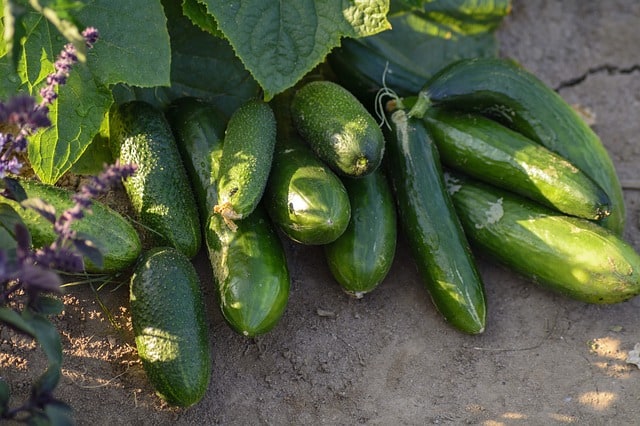
Temperature Tolerance: Cucumbers flourish at temperatures between 70°F and 95°F. They are sensitive to cold and should not be planted until the soil has warmed significantly.
Planting Dates: Sow cucumber seeds directly into the garden from late April through June for optimal growth in Zone 8.
Cucumbers require consistent moisture for best results; avoid letting the soil dry out. The two main types include slicing cucumbers for fresh eating and pickling cucumbers, which are shorter and meant for preservation. You can also explore different varieties, including English cucumbers, which have a milder flavor.
Summer Squash
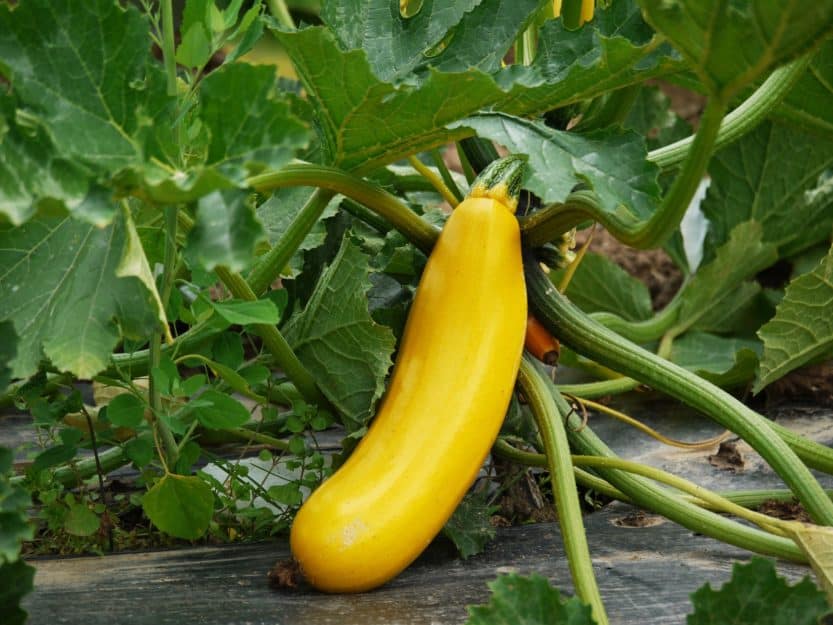
Temperature Tolerance: Summer squash prefers temperatures between 70°F and 85°F. Frost will damage these plants, so late planting in June helps avoid cool weather.
Planting Dates: In Zone 8, summer squash can be seeded directly into the ground from mid-April to late June.
Varieties such as zucchini and yellow squash can be harvested within 50-70 days. Ideal growing conditions include full sunlight and regular irrigation. Encourage a harvest of small fruits by picking them early, which also promotes further flowering.
Sweet Corn
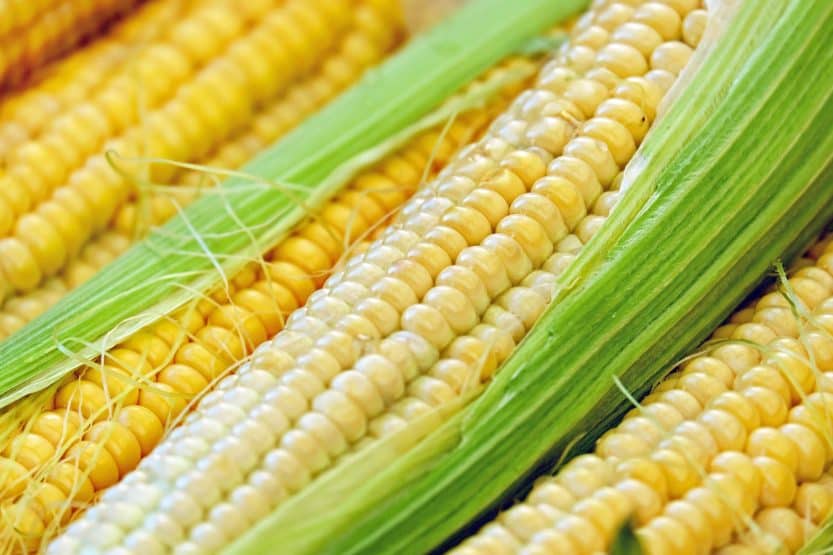
Temperature Tolerance: Sweet corn prefers temperatures above 60°F, ideally between 70°F and 95°F. Cool nights and early spring planting can stunt growth.
Planting Dates: In Zone 8, sweet corn can be sown from mid-April until early June, making June a great time to ensure robust summer warmth for germination.
Corn is a heavy feeder, so ensure to amend the soil with organic matter. Plant corn in blocks rather than rows to enhance pollination and achieve fuller ears. Prepare for harvest in approximately 70-100 days, reaping your sweet-tasting rewards.
Tomatoes
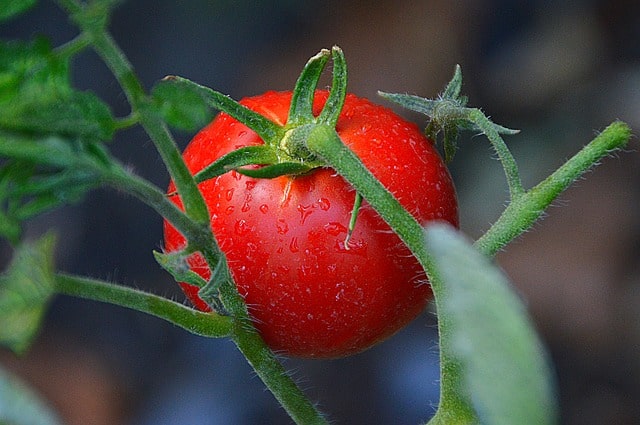
Temperature Tolerance: Tomatoes thrive in warm conditions, ideally between 70°F and 95°F. While they enjoy heat, they can suffer in extreme heat, particularly in low moisture conditions.
Planting Dates: If not already started indoors, set tomato plants out in June in Zone 8. They may be started as early as March indoors and then transplanted.
There are determinate varieties that grow to a certain height and produce fruit all at once, and indeterminate varieties that continue to grow and yield throughout the season. Tomatoes benefit greatly from companion planting; for example, basil enhances their flavor and repels pests. Regular pruning and staking will ensure healthy growth.
Peppers

Temperature Tolerance: Peppers favor warm temperatures, flourishing in the range of 70°F to 90°F. They are sensitive to cooler weather, so ensure the planting area is consistently warm.
Planting Dates: Transplant pepper seedlings around mid-May to June for a fruitful crop in Zone 8.
There are many pepper varieties, from sweet bell peppers to fiery jalapeños, each requiring around 70-90 days to mature. They do well in heavily fertilized soil and can be grown in containers if well-drained. Regular watering is essential, especially during fruiting, to avoid blossom-end rot.
Okra
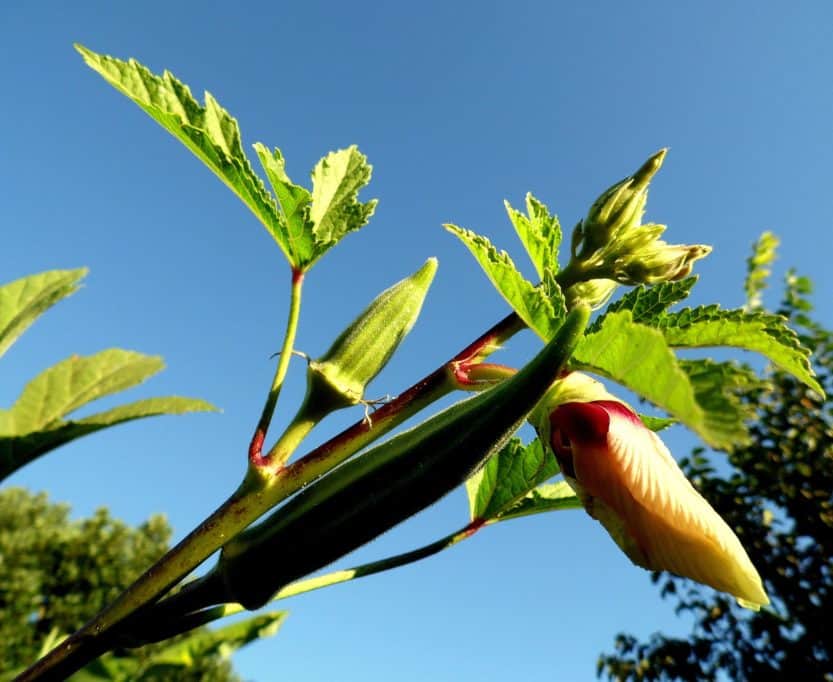
Temperature Tolerance: Okra thrives in warm temperatures and is best grown in the heat, ideally around 75°F to 95°F.
Planting Dates: Sow okra seeds directly into the garden in June, once the soil has warmed.
Okra plants are incredibly resilient and can tolerate drought conditions once established. With a growth height of 3-6 feet, they can provide an attractive backdrop in your garden. Okra is often harvested when pods are about 2-4 inches long, roughly 60-80 days after sowing.
Carrots
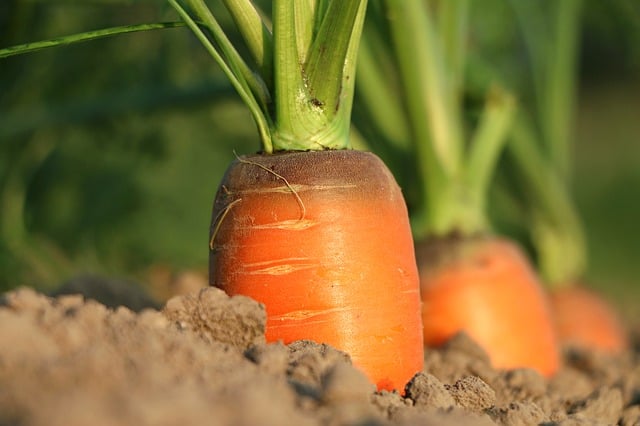
Temperature Tolerance: Carrots prefer cooler temperatures, ideally between 60°F and 70°F, but they can be successfully grown in warmer weather with adequate moisture.
Planting Dates: Carrots can be sown throughout June in Zone 8 but are best planted early in the month to avoid excessive heat later on.
Carrots should be sown directly into the garden, where they like loose, sandy soil to develop properly. Thinning is essential to give carrots space to grow to size. Mulching can help retain moisture and cool the soil. Expect mature carrots in about 70-80 days.
Beets

Temperature Tolerance: Beets can adapt to a range of temperatures but prefer cooler growing conditions around 60°F to 75°F.
Planting Dates: Sow beet seeds in the ground in June, allowing them to mature before the hottest part of summer.
Beets offer both edible greens and roots. They grow best in well-drained, rich soil. Keep the soil consistently moist for even germination and healthy growth. Harvest typically takes 55-70 days. Beets also have the benefit of improving soil health, as they are effective at digging deep, loosening compact earth below.
Radishes
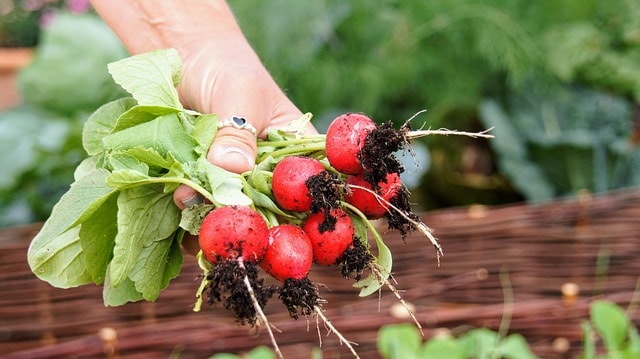
Temperature Tolerance: Radishes prefer cooler weather, ideally thriving between 50°F and 70°F. They do not well in extreme heat.
Planting Dates: In Zone 8, radishes can be seeded in late May through June, particularly during the cooler times of the month.
Radishes are quick to germinate, with some varieties maturing in as little as 25-30 days, making them perfect for quick harvests. They can be grown in less fertile soil and tend to have a peppery flavor bite. Rotate radish crops annually to maintain soil health.
Flowers To Plant
Zinnias

Temperature Tolerance: Zinnias thrive in warm temperatures ranging from 70°F to 90°F and are sensitive to frost. They will grow vigorously in full sun.
Planting Dates: You can start zinnias from seeds in late May through June for optimal summer blooms.
Zinnias are favored for their diversity of colors and shapes while attracting butterflies to your garden. They are easy to grow from seeds, and deadheading will inspire a longer blooming period. Their versatility allows them to be used in beds, borders, or containers.
Marigolds
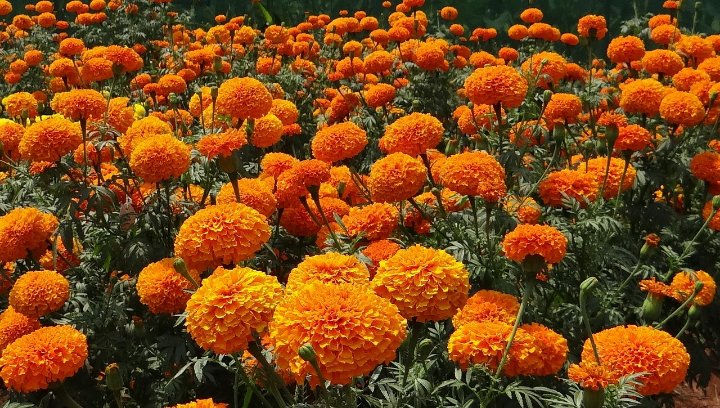
Temperature Tolerance: Marigolds are tolerant of heat, flourishing best at temperatures from 65°F to 90°F and are resilient to drought once established.
Planting Dates: Plant marigold seeds directly into the garden in June, where they will thrive in warm weather.
Marigolds are ideal companions for vegetables because they repel nematodes and other pests. These resilient annuals come in various heights and colors, making them suitable for different design needs. Their long blooming period can continue up until frost.
Cosmos

Temperature Tolerance: Cosmos flowers enjoy temperatures that range from 60°F to 85°F, making them well-suited to the warm summers of Zone 8.
Planting Dates: You can sow cosmos seeds directly in the garden in June for a late-summer bloom.
These annuals produce delightful daisy-like flowers and are particularly suited for wildflower or cottage gardens. Cosmos self-seed, so they can come back each year if the conditions are right. They are drought-tolerant, making them suitable for low-maintenance gardens.
Sunflowers

Temperature Tolerance: Sunflowers prefer warm weather, thriving best between 70°F and 100°F.
Planting Dates: Directly sow sunflower seeds in the garden from late April through June for the best results.
Sunflowers can grow extremely tall, adding a striking vertical element to your garden. They produce edible seeds, which can attract birds and wildlife. Selecting varieties that thrive in your specific microclimate will ensure a robust and bountiful bloom.
Petunias
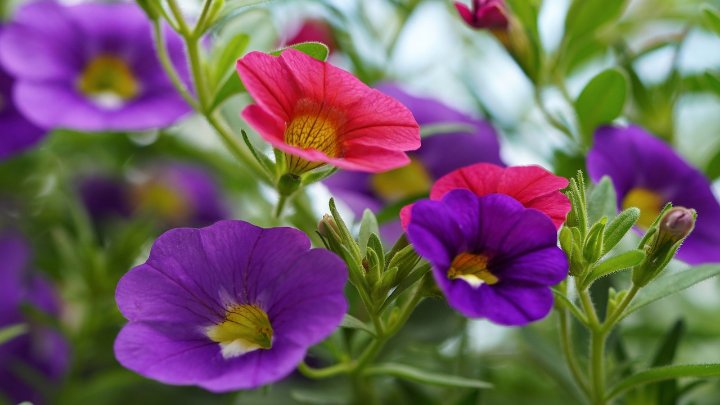
Temperature Tolerance: Petunias enjoy warm, temperate weather that ideally stays around 70°F to 80°F. They are sensitive to frost.
Planting Dates: Transplant petunias in June for colorful blooms throughout summer.
Offering a vibrant palette, petunias can be grown in beds or containers and may trail down for added visual interest. They benefit from regular deadheading, which will also encourage more blooms. These annuals are known to be multi-season performers.
Salvia
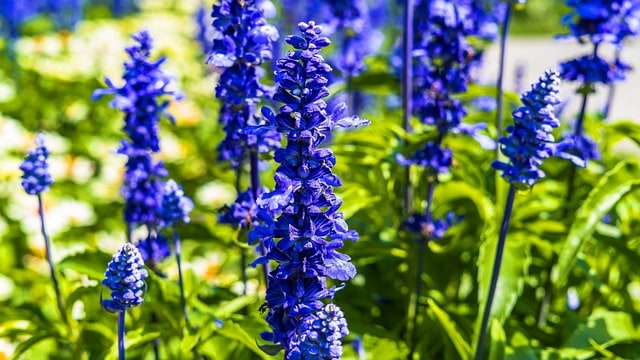
Temperature Tolerance: Salvia is tolerant of heat and grows well in temperatures that reach up to 90°F.
Planting Dates: June is a perfect time for direct sowing or transplanting salvia plants.
These aromatic plants are also beloved by pollinators, particularly hummingbirds and bees, and can tolerate drought, making them fabulous choices for low-maintenance gardens. Salvia comes in various forms, some of which are annuals and others perennials, each adding a distinct character to the landscape.
Gaillardia (Blanket Flower)
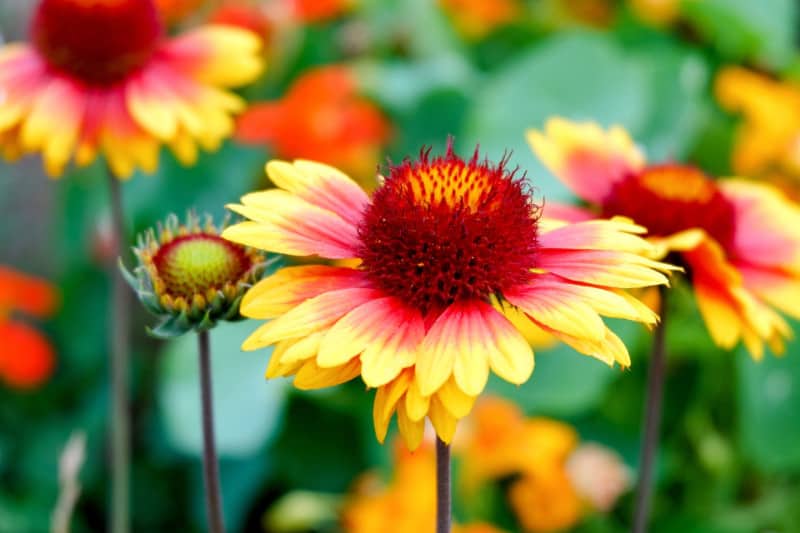
Temperature Tolerance: Gaillardia thrives in hot, sunny conditions, ideal between 70°F and 90°F.
Planting Dates: Sow seeds in June for vibrant blooms that start in mid-summer.
Known for their stunning colors that resemble a blazing sunset, gaillardia is a fabulous drought-tolerant flower. They attract a range of pollinators, contributing to ecological diversity. Their ability to bloom profusely through heat conditions makes them excellent for summer landscapes.
Black-Eyed Susans
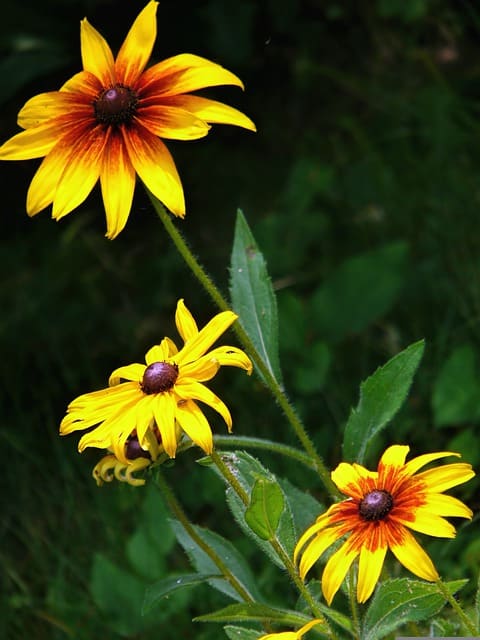
Temperature Tolerance: These perennials thrive well in full sun and grow best in temperatures from 60°F to 90°F.
Planting Dates: June is a great time to plant new starts or seeds for flowers that will bloom later in the summer.
Black-eyed Susans are adaptable and can grow in various soil conditions, which makes them popular among gardeners. These vibrant flowers are often associated with wildflower gardens and can last long into the autumn, providing continuous color.
Lantana
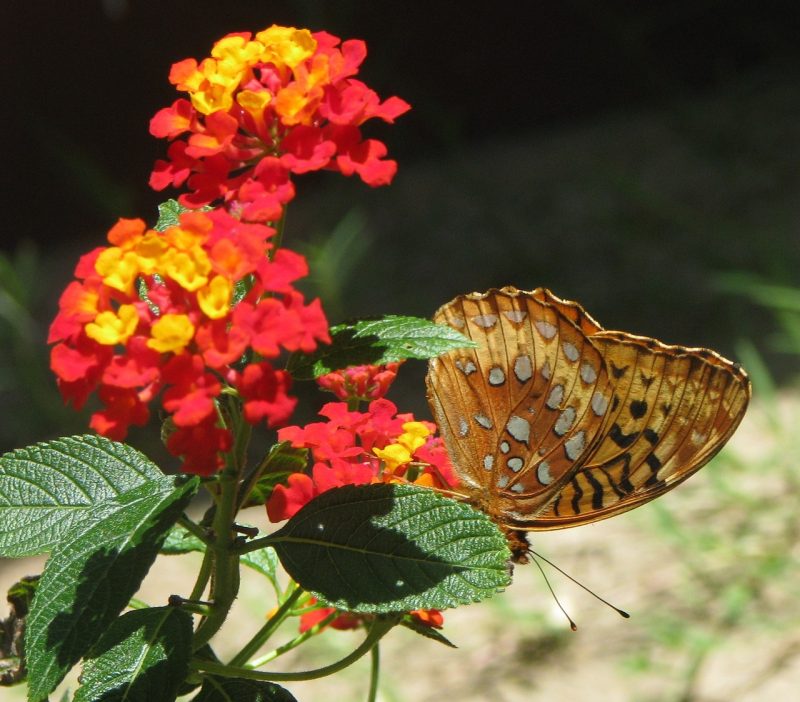
Temperature Tolerance: Lantana loves heat and can thrive in temperatures from 70°F to 100°F, making them excellent for Zone 8.
Planting Dates: You can plant lantana in June, allowing them to benefit from the warmth.
Lantana is a favorite for butterflies and has a long flowering season that runs until frost. These hardy plants are easy to grow and capable of attracting various beneficial insects, thereby enhancing the biodiversity of your garden.
Lobelia
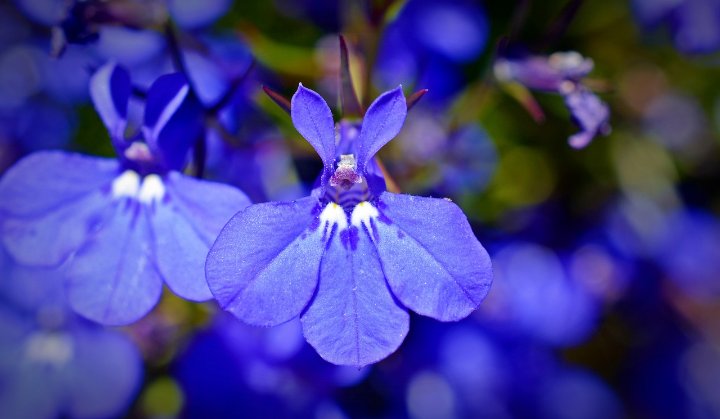
Temperature Tolerance: Lobelia prefers cooler soil but can handle warmth well. Optimal growth temperatures range from 60°F to 75°F.
Planting Dates: While typically planted earlier in the spring, lobelia can still be started in June if conditions are favorable.
Often used in hanging baskets and borders, lobelia offers cascading blooms that add beauty to garden designs. Stability in moisture encourages optimum growth, and they can draw a variety of pollinators, making them a spectacular addition.
Herbs To Plant
Basil
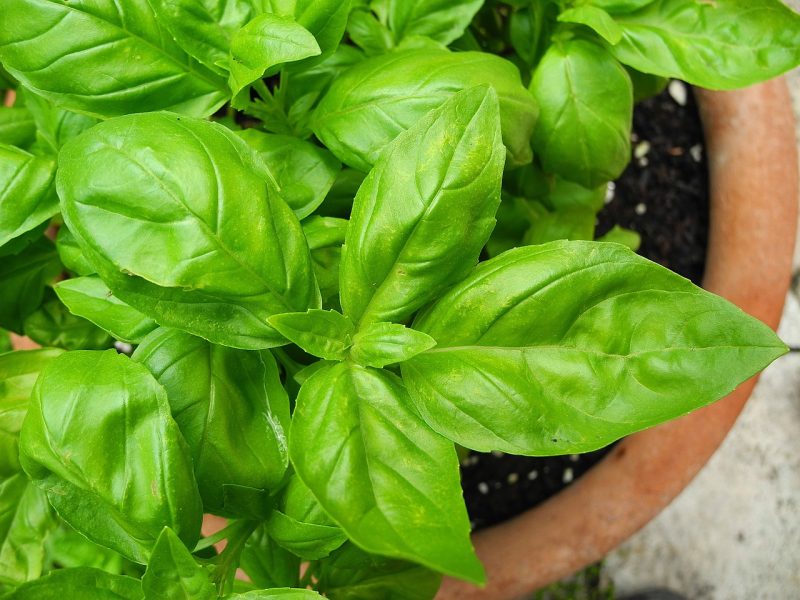
Temperature Tolerance: Basil thrives in warm temperatures from 70°F to 90°F and is highly sensitive to frost.
Planting Dates: Plant basil seeds directly in the garden mid-May to June in Zone 8.
This aromatic herb is a staple in various cuisines, particularly Italian. Regular harvesting encourages bushy growth, and basil pairs beautifully with tomatoes, enhancing their flavors when grown together. Plus, it’s an excellent companion plant that helps deter harmful insects.
Cilantro
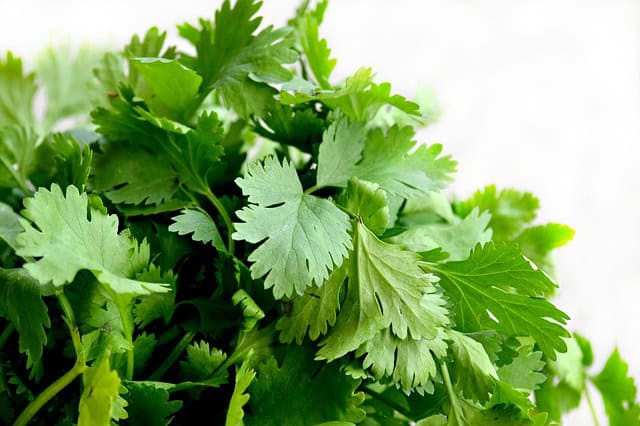
Temperature Tolerance: Cilantro prefers cooler temperatures, thriving between 60°F to 75°F and can bolt in extreme heat.
Planting Dates: Sow cilantro seeds in early June for continued growth, with a second round possible later in the fall.
Both the leaves and seeds (coriander) are culinary staples. Cilantro grows quickly—leaves can be harvested within a month. Shading them from severe heat can prolong their growth and usability.
Dill
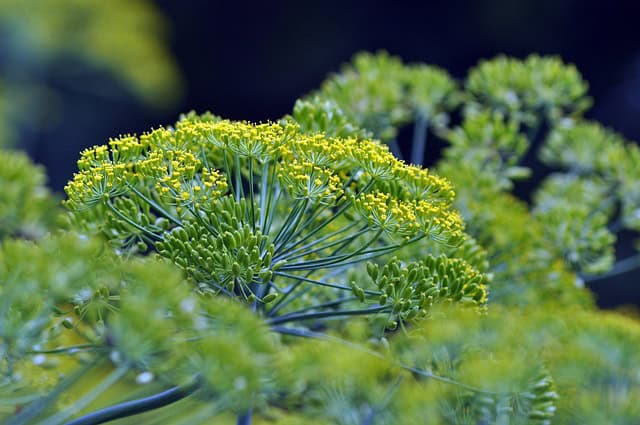
Temperature Tolerance: Dill grows best in temperatures around 70°F to 80°F but prefers moderate summers in Zone 8.
Planting Dates: Plant dill seeds directly into the soil in June.
Dill is a beautiful annual herb, known for its feathery fronds and yellow blooms that attract beneficial insects. It can be used fresh, dried, or as a flavoring for a wide range of dishes, from pickles to marinades.
Oregano
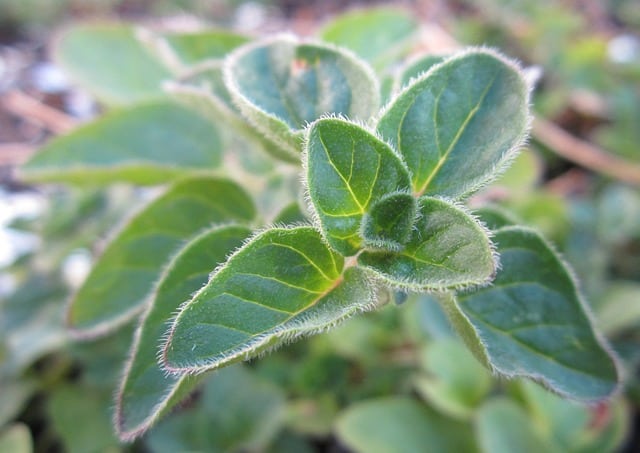
Temperature Tolerance: Oregano thrives in warm and sunny areas, doing well in temperatures from 60°F to 90°F.
Planting Dates: Sow oregano seeds in June and expect robust growth due to the warm temperatures.
Oregano is a culinary herb known for its robust flavor, particularly in Mediterranean dishes. It is a perennial, meaning once established, it will return year after year, providing continuous enjoyment with minimal maintenance.
Thyme
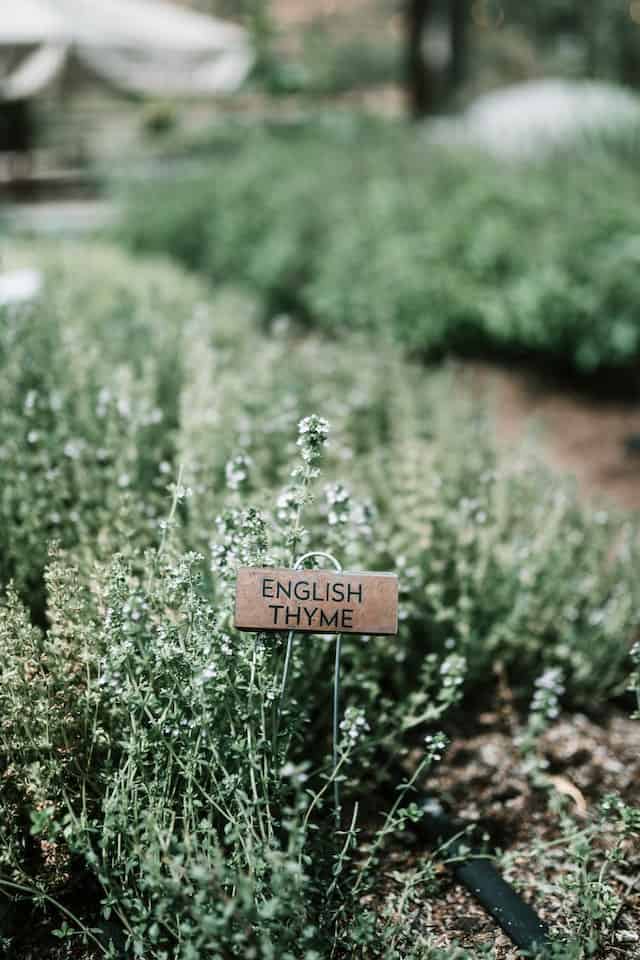
Temperature Tolerance: Thyme prefers warm conditions, thriving in temperatures between 60°F and 80°F.
Planting Dates: Thyme can be planted from late spring through June in Zone 8.
This drought-tolerant herb can be used in a variety of culinary applications, ranging from meats to baked goods. It’s also a perennial herb, will spread, and is excellent as a ground cover.
Chives

Temperature Tolerance: Chives prefer cooler weather and perform well around 60°F to 70°F.
Planting Dates: Start chives in late spring to early June for best results in Zone 8.
Chives are one of the first herbs to appear in spring and are perennial, giving you early bites of color and flavor in your salads. The bulbs can also be harvested for use in a variety of dishes, and they attract pollinators.
Parsley
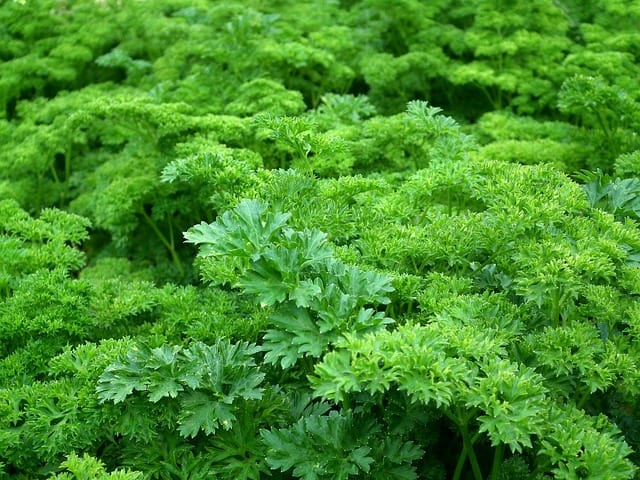
Temperature Tolerance: Parsley grows best in moderate temperatures around 60°F to 70°F but can tolerate a wide range.
Planting Dates: Sow parsley seeds in June and expect growth into the cooler months.
Parsley not only enhances dishes; it is packed with nutrients and can double as an ornamental plant. Thinning seedlings will help produce more robust plants.
Mint
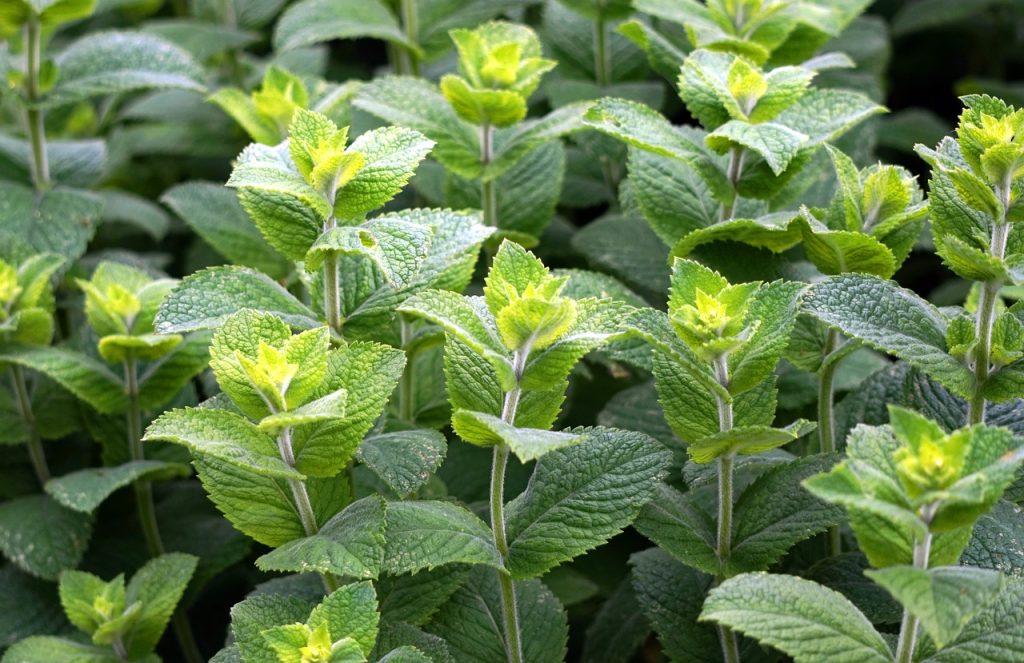
Temperature Tolerance: Mint grows well in warmth from 70°F to 85°F but does best when kept well-watered.
Planting Dates: Plant mint in June, ensuring to put it in containers to prevent spreading.
Mint has a strong flavor and aroma, making it a favorite for teas and garnishes, but it can overtake garden space if left unchecked. Mint’s susceptibility to pests makes it a great container plant, so it remains manageably close.
Tarragon
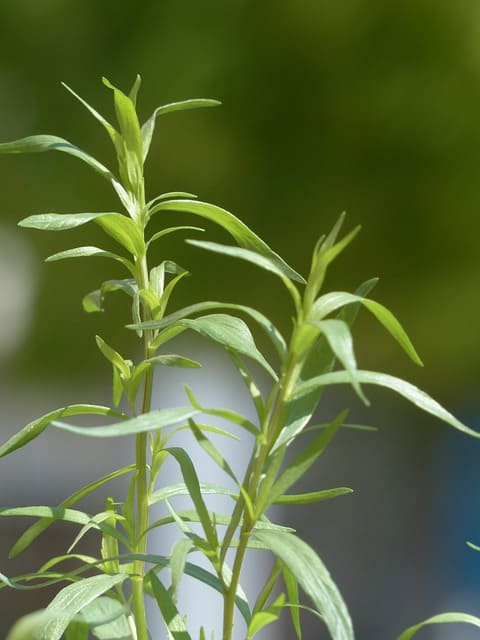
Temperature Tolerance: Tarragon enjoys warm weather and does well in temperatures hovering around 70°F to 80°F.
Planting Dates: Sow seeds in the garden in June, allowing enough time for growth before the colder months.
French tarragon is prized for its culinary uses and unique flavor. This perennial herb prefers well-drained soils and can form a bushy growth, making it a lovely addition to herb gardens.
Fennel
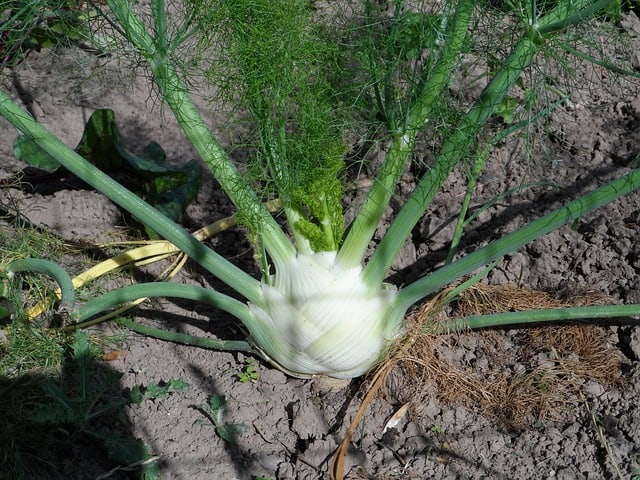
Temperature Tolerance: Fennel thrives in cool weather but can grow in warmer conditions if kept adequately watered.
Planting Dates: In Zone 8, fennel can be started in June.
Fennel is a lovely herb that can be used in many forms: leaves, seeds, and bulbs. Its height and airy nature lend an elegant touch to the garden, and it can be a great companion to tomatoes, being beneficial for their growth.
Landscape Plants To Plant In June
Hydrangeas

Temperature Tolerance: Hydrangeas thrive well in zones with temperatures between 70°F and 85°F, preferring shaded conditions during the hottest part of the day.
Planting Dates: June is an excellent time to plant hydrangeas in Zone 8, allowing them to establish before the summer heat peaks.
Renowned for their massive flowering heads, hydrangeas come in several varieties. They can thrive in diverse soil conditions, though they prefer rich, well-drained soil. The pH of the soil also affects their flower color—acidic soils yield blue blooms, while alkaline soils produce pink. As perennials, they will return year after year, offering beauty through changing seasons.
Daylilies
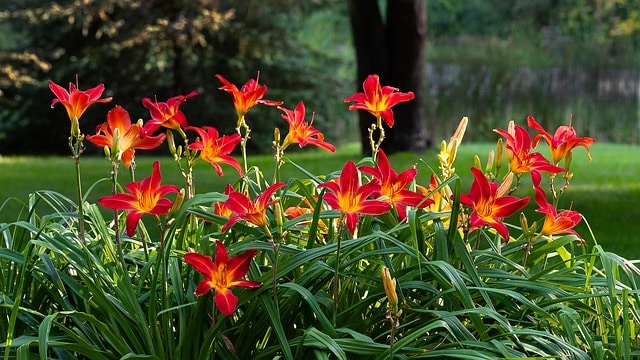
Temperature Tolerance: Daylilies are hardy and can thrive in temperatures from 60°F up to 100°F.
Planting Dates: Daylilies can be planted anytime from early spring through June.
Known for their vibrant, trumpet-shaped flowers, daylilies are resilient plants that can cope with drought once established. Each bloom lasts only a day but with numerous buds per stem, a single plant can provide a long season of blooms. They are great for providing continuous color throughout the growing season.
Knock Out Roses
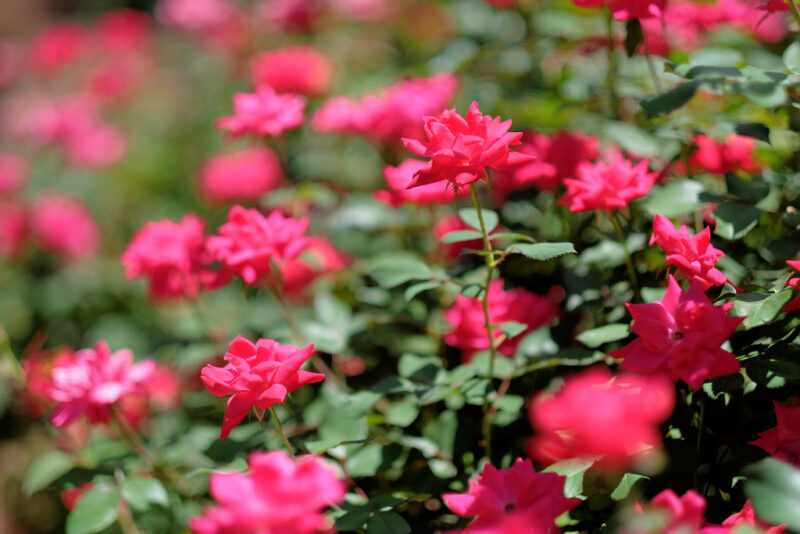
Temperature Tolerance: Knock Out roses thrive in warm conditions, performing well in 70°F to 90°F temperatures.
Planting Dates: June is a great time to plant new Knock Out roses in Zone 8, allowing the plants to adapt to their surroundings during summer.
These roses are loved for their disease resistance and ability to bloom continuously from late spring until the first frost. With minimal care, they can fill your garden with vibrant hues. Pruning in late winter or early spring will promote healthier blooms through summer.
Italian Cypress

Temperature Tolerance: Italian cypress prefers warm climates and tolerates temperatures up to 100°F.
Planting Dates: Plant Italian cypress in June for full establishment before the heat peaks.
This tree is excellent for vertical accentuations or as a privacy screen. With their narrow silhouette, they are perfect for creating height in smaller spaces. They’re drought-tolerant once established, making them a low-maintenance choice.
Boxwoods
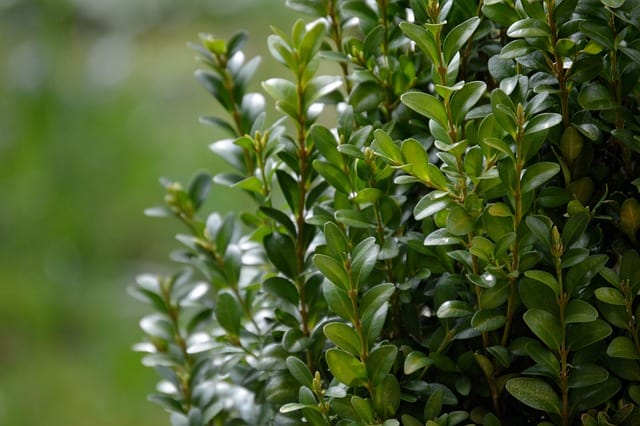
Temperature Tolerance: Boxwoods handle heat very well, thriving in temperatures between 60°F and 90°F.
Planting Dates: They can be planted all through June in Zone 8.
Boxwoods are classic landscape shrubs, appreciated for their versatility in design. They can be trimmed to shape and serve as hedges or standalone features. Boxwoods’ evergreen nature ensures year-round structure and greenscape.
Liriope
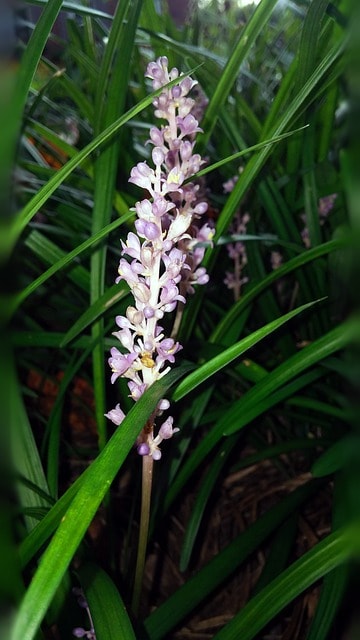
Temperature Tolerance: Liriope prefers warmer climates and grows best in temperatures of 70°F to 85°F.
Planting Dates: June is an excellent time to establish new liriope plants in your landscape.
Liriope offers the advantage of year-round foliage and beautiful spikes of purple flowers in late summer. It works wonderfully as ground cover, edging, or in mixed beds. Moreover, it’s highly resilient, adaptable to various conditions, and resistant to pests.
Ornamental Grasses
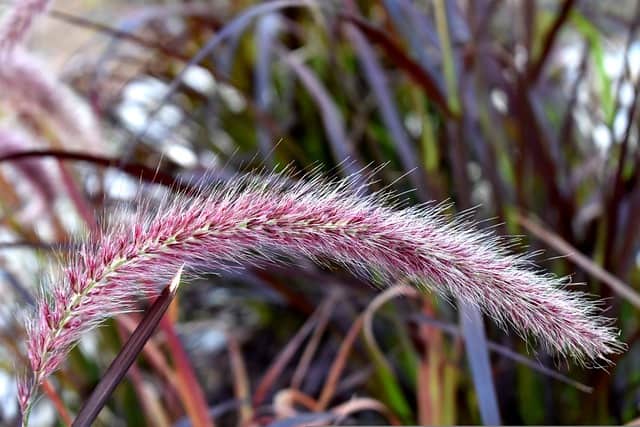
Temperature Tolerance: Ornamental grasses do well in heat, particularly those like Miscanthus and Pennisetum that thrive at 70°F to over 100°F.
Planting Dates: Plant ornamental grasses in June for summer establishment.
Ornamental grasses provide movement, height, and texture to garden designs. They require minimal maintenance and can survive drought conditions once established, contributing to sustainability in your landscape.
Canna Lilies
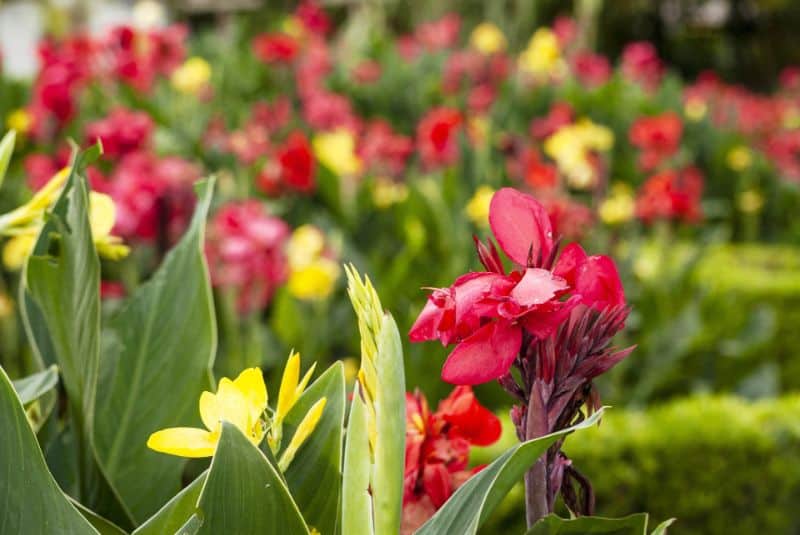
Temperature Tolerance: Canna lilies thrive best in warm temperatures anywhere from 70°F to 95°F.
Planting Dates: June is an excellent time for planting canna lilies, allowing them to develop strong roots in warm soil.
Known for their bold foliage and striking flowers, canna lilies can reach between two to six feet tall, offering impressive visual impact. They are ideal for tropical and contemporary garden designs and attract pollinators, enhancing the overall biodiversity of your garden.
Japanese Maple

Temperature Tolerance: Japanese maples prefer slightly cooler spots; they excel in temperatures of 60°F to 75°F but can adapt to warmer conditions with adequate moisture.
Planting Dates: June is a good time for establishing new plants, especially as the weather warms.
The beauty of Japanese maples lies in their stunning foliage and architectural shape. They come in various forms, ranging from weeping to upright, and are perfect for small-space gardening. Regular watering and protection from the harsh afternoon sun will keep them healthy and vibrant.
Sedum (Stonecrop)
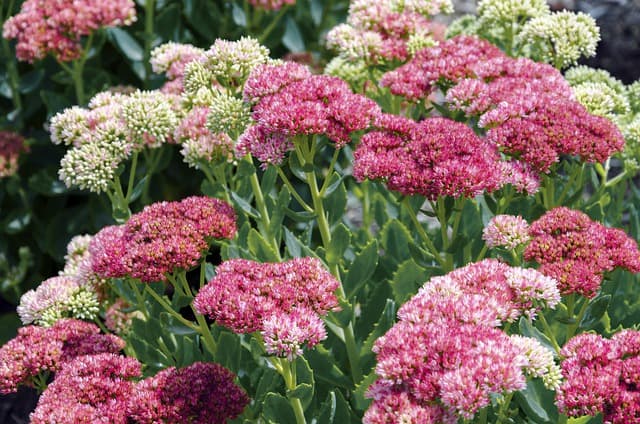
Temperature Tolerance: Sedum tolerates a wide temperature range and excels in hot weather, thriving in 70°F to 100°F.
Planting Dates: Sedum can be established in June, making it a flexible choice for gardeners.
Sedum is a low-maintenance succulent that provides vibrant color and texture in the garden. It’s drought-tolerant, making it ideal for xeriscaping and rock gardens. With a wide variety of shapes and colors, sedum can offer unique visual interest throughout your landscape.



